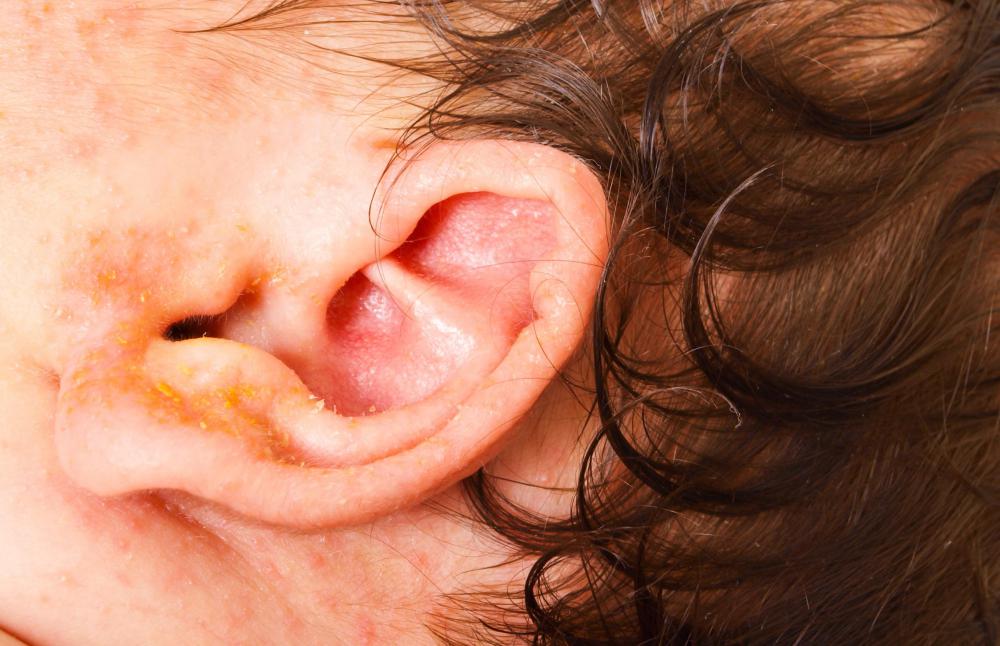At WiseGEEK, we're committed to delivering accurate, trustworthy information. Our expert-authored content is rigorously fact-checked and sourced from credible authorities. Discover how we uphold the highest standards in providing you with reliable knowledge.
What is an Outer Ear Infection?
Also called otitis externa, an outer ear infection is an infection in the ear canal between the eardrum and the opening of the ear. In serious cases, the infection also affects the outer part of the ear. Outer ear infections are caused by bacteria or fungus, and the first symptom is usually an earache. Other symptoms might include itching, a sore throat, or temporary hearing loss.
Outer ear infections are often referred to as swimmer's ear, because the infection is often caused by wet or humid environments. People who swim frequently and who always turn their heads in the same direction to breathe often get the infection in the top ear, where water is trapped for long periods of time. Repeat infections in swimmers might be avoided by alternating the direction the head is turned to breathe. Earplugs may also be used to protect swimmers and divers from infections.

Swimming in dirty water, such as a pond or lake, can also cause an outer ear infection. Water in a well-maintained pool is generally relatively free of pathogens, but other water is not. People who live in very humid environments may also get outer ear infections more frequently. Another common cause is improper cleaning of the ear with cotton swaps or other instruments, where the delicate skin inside the ear canal can be cut or abraded. In some cases, a minor outer ear infection is exacerbated by attempts to clean the ears.

In most cases, an outer ear infection is acute, which means it come on quickly and causes intense pain when the the ear is touched or pulled, or when chewing or swallowing. The ear may also feel plugged. Some people suffer from chronic outer ear infections, which may be caused by regular exposure to pathogens or because of a previous infection that did not heal properly. People who suffer from chronic dermatitis, such as eczema or psoriasis, or people with compromised immune systems may also have chronic outer ear infections.

Unlike a middle ear infection, an outer ear infection is generally not accompanied by fever, dizziness, or loss of balance. Some minor infections might pass on their own, while others require more aggressive treatment. While an infection is healing, the ear must be kept as dry as possible, so swimming should be avoided and the ear should be carefully dried after bathing. Over-the-counter or prescription corticosteroid creams may be used to reduce swelling and inflammation. In some cases, antibiotic or anti-fungal drops are prescribed.
AS FEATURED ON:
AS FEATURED ON:













Discuss this Article
Post your comments